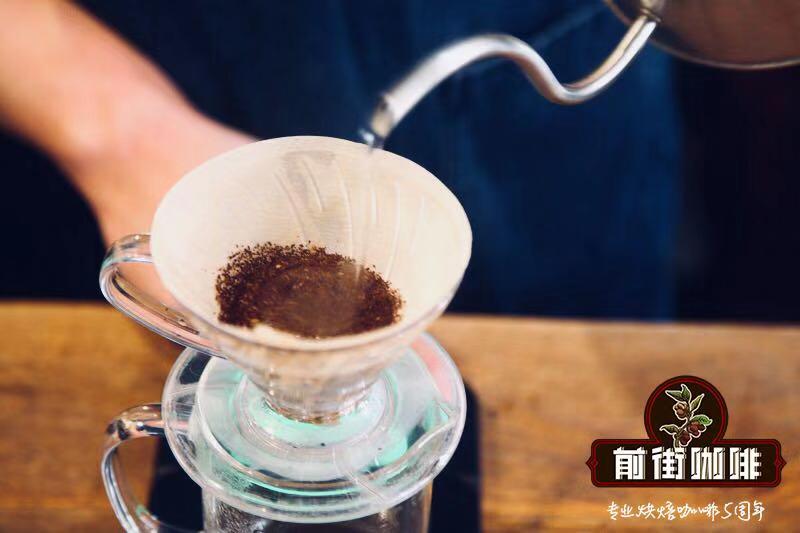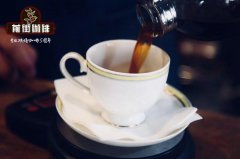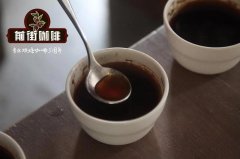Arabica coffee beans taste good| Which is better, Robusta or Arabica?

Professional coffee knowledge exchange more coffee bean information please follow the coffee workshop (Wechat official account cafe_style)
Whenever we go into a coffee shop to drink coffee, we can smell the strong aroma of coffee, which attracts many people to learn about coffee, taste coffee, and finally fall in love with coffee. Every time we drink coffee, do we ever think about how many kinds of coffee there are, what kind of coffee we drink, what is the difference between them, and which kind of coffee beans will be better?
So today I would like to introduce to you the differences between the varieties of coffee to drink.
I. Arabica species
The origin of Arabica species is in Ethiopia, which is known as the cradle of humans and coffee, and the mythical Garden of Eden, where Adam and Eve ate forbidden fruit, is thought to be surrounded by several major coffee-producing areas in Ethiopia. At first, it was found that it had a good refreshing effect and was eaten as medicine. Later, the secret medicine used by Islamists to cure body and mind and evening prayers spread from Arabia to the world, and became a popular drink all over the world.
Arabica coffee beans account for about 70% of the world's production, and it has excellent aroma and flavor, making it the only coffee variety of native species that can be drunk directly. However, Arabica species have higher requirements for environment and planting, and their intolerance to drought, frost, diseases and insect pests, especially leaf rust (the plague of coffee) will lead to the failure of coffee plantations in a large area. Sri Lanka was once a world-famous coffee producing area, and at the end of the 19th century, due to the destruction of coffee farms across the country due to leaf rust, Sri Lanka switched to black tea.
The main producing areas of Arabica species are Central America, South America, Africa (mainly in Ethiopia, Kenya and other East African countries), Asia (mainly in Indonesia, Vietnam and other Southeast Asian countries) and Hawaii in the United States. Coffee trees grown in Arabica are suitable for colder tropical high-altitude areas. Especially like to grow on steep hillsides, especially the terrain with large temperature difference between day and night, suitable sunshine and shade, and prone to morning fog can grow high-quality Arabica beans. Rich volcanic soil with enough moisture and moisture and rich in organic matter is an excellent environment for growing coffee. The main producing areas of coffee are mainly concentrated in tropical countries between Tropic of Cancer and Tropic of Cancer, in which the quality of coffee in the north of the equator is better than that in the south of the equator.
Arabica coffee beans are grown on steep slopes, are not easy to be harvested mechanically, are mainly picked manually, and the transportation is inconvenient, so the price of Arabica beans is significantly higher than that of Robusta beans.
Arabica beans are small granule beans with flat and oval shape, strong smell, rich and delicate smell, pleasant sour taste, smooth texture and less bitter taste.
Arabica species originated from Ethiopia, spread all over the country, and after repeated mutation and hybridization, many coffee varieties have been derived, some of which have been improved in quality and flavor. some have been improved in environmental adaptability, disease and insect resistance and yield, and now dozens of varieties have been developed. The main varieties are: bourbon, Itsuka, Kaddura, Kaduai, Pacamara, Kadimo, Malaggippe, Mondonovo, Kent, Amareo, mutant Colombia and so on.
2. Robusta species
Robusta is willing to mean "tenacious and robust". The Robusta is a leaf rust-resistant variety found in the African Congo, which is more resistant to drought and cold than the Arabica species. The Robusta species grows in hot and humid areas and is widely planted in lowlands and plains below 1000 meters above sea level. Robusta beans have a unique "strange smell" and bitter taste, people who like it will think it is a very charming fragrance, those who don't like it will think it is musty smell, a cup of coffee made of Arabica and Robusta coffee beans, as long as the proportion of robusta beans is more than 3%, then the whole cup of coffee is Robusta flavor, its style is so bright and strong. That almost no one drinks 100% robusta bean coffee. Robusta beans are mainly used for the formulation of beans when used directly, and Luodou is more used for instant coffee, bottled coffee beverages, raw materials for food industry and so on. The caffeine content of robusta beans is about 2-3 times that of Arabica, much higher than 1.5% of Arabica.
Robusta beans are mainly planted in lowlands and plains below 1000 meters above sea level, with fast growth, strong resistance to diseases, pests and disasters, and can be planted on more barren land, so their aroma and taste are much lower than those of Arabica species. The main producers of Robbosa beans are Indonesia, Vietnam, Brazil and other countries.
Because of its high yield, Robusta beans can be picked mechanically in lowlands and plains, and they have a great advantage over Arabica beans in price, so they are widely used in commercial beans. Because Robusta beans are rich in oil, Italy, the hometown of espresso, has a very high proportion of Robusta beans, and some manufacturers or stores of Italian beans can use Robusta beans in the range of 30-60%. It is important to note that not all Arabica beans are good beans, and not all Robota beans are bad. In recent years, Uganda, the hometown of Robstadou beans, has also developed boutique Robusta beans.
The flavor of Robusta beans is mediocre and pungent, the sour taste is not obvious, and the bitter taste is heavy. Unbaked Luodou smells like raw peanuts, the taste after baking is close to the taste of wheat tea, and deep baking appears rubber flavor (also known as burning tire flavor), so when used in instant or bottled coffee drinks, flavors are generally added, otherwise most people will not be blessed with it.
I believe I have a general understanding after reading it. These two kinds of coffee are the most widely used beans in the coffee market, and one is rarely consumed because of its poor quality. To put it simply, Arabica coffee has a more obvious aroma and tastes better than Robusta.
END
Important Notice :
前街咖啡 FrontStreet Coffee has moved to new addredd:
FrontStreet Coffee Address: 315,Donghua East Road,GuangZhou
Tel:020 38364473
- Prev

How to make Viennese coffee tastes good | introduce the authentic practice of Viennese coffee
Professional coffee knowledge exchange more coffee bean information please follow the coffee workshop (Wechat official account cafe_style) Vienna coffee is a very long history of Austrian coffee, the music capital of Vienna is not only floating in the air with beautiful notes, but also floating strong coffee aroma, in such a romantic country to taste a cup of coffee with a long history, how happy it is
- Next

Are Mantenin coffee beans Arabica beans? what is the output of Arabica coffee beans?
Professional coffee knowledge exchange more coffee bean information Please pay attention to the coffee workshop (Wechat official account cafe_style) in the coffee we drink there are a variety of different flavors, such as citrus, herbal, berry and so on, these flavors are essential to taste a cup of coffee. Anyone who knows anything about coffee knows that Arabica is a coffee breed with a stroke flavor.
Related
- Beginners will see the "Coffee pull flower" guide!
- What is the difference between ice blog purified milk and ordinary milk coffee?
- Why is the Philippines the largest producer of crops in Liberia?
- For coffee extraction, should the fine powder be retained?
- How does extracted espresso fill pressed powder? How much strength does it take to press the powder?
- How to make jasmine cold extract coffee? Is the jasmine + latte good?
- Will this little toy really make the coffee taste better? How does Lily Drip affect coffee extraction?
- Will the action of slapping the filter cup also affect coffee extraction?
- What's the difference between powder-to-water ratio and powder-to-liquid ratio?
- What is the Ethiopian local species? What does it have to do with Heirloom native species?

